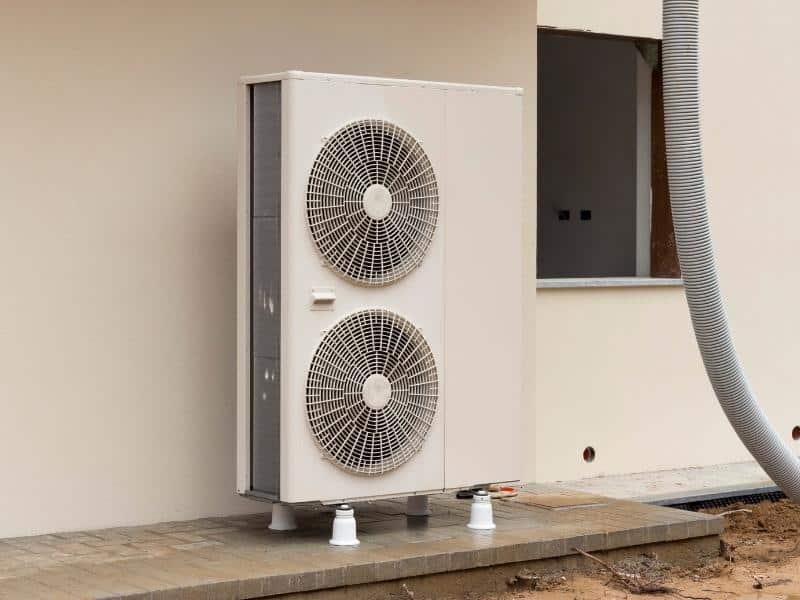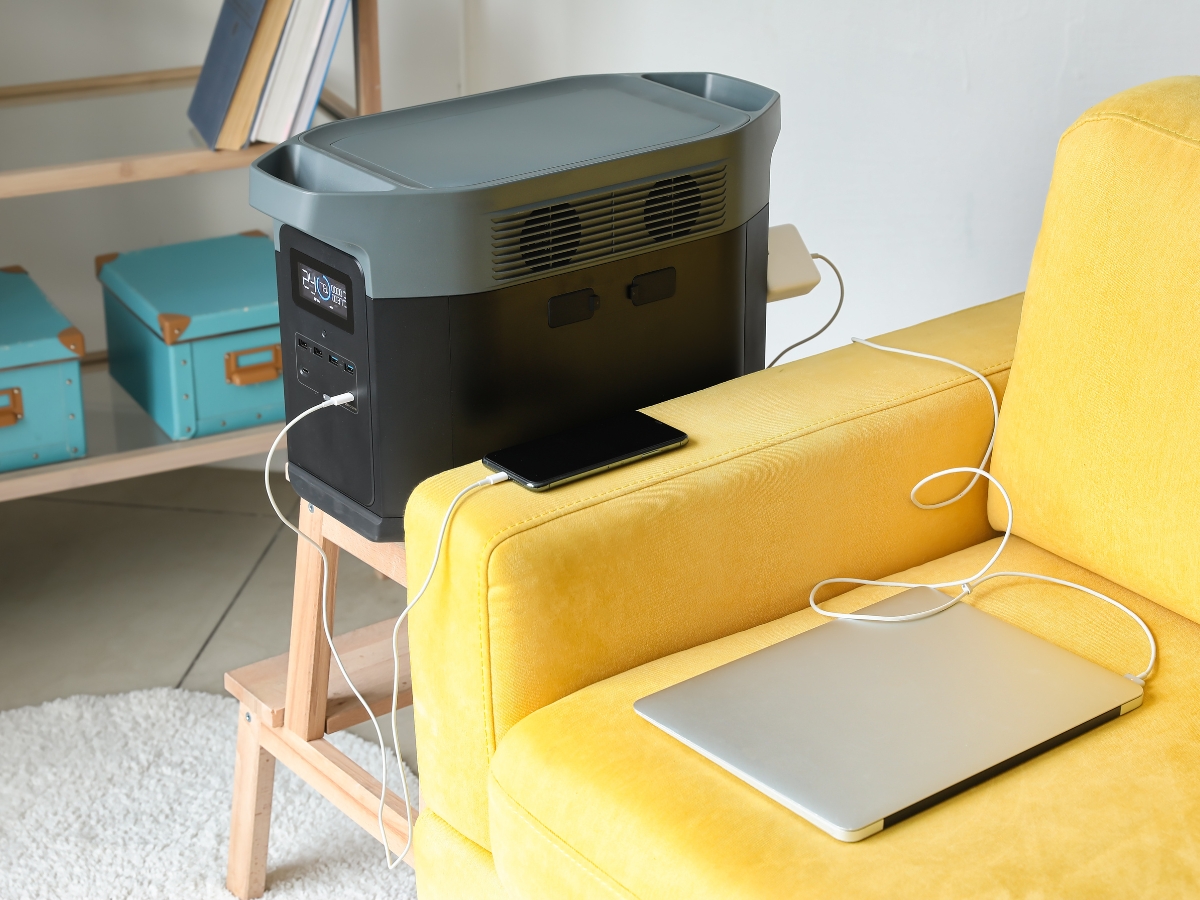If you’re used to a traditional heating and cooling system, the ins and outs of a heat pump can be confusing at first. In particular, heat pumps differ from regular A/C when the outside fan is running.
The outside fan of a heat pump only runs for a few reasons, and it’s integral to how heat pumps operate—including how they improve on traditional air conditioning and heating systems.
In this article, I’ll go over the following points:
- When the outside fan runs
- How a heat pump works
- The types of heat pump
I’ll also explain how heat pumps use an ingenious physics trick to cool and heat your home more efficiently than your usual HVAC unit.

When Does the Outside Fan Run on a Heat Pump?
The outside fan on a heat pump will run anytime you turn the pump on. Both heating and cooling utilize the outside fan, either for drawing in cold air or releasing hot air. If you set your thermostat to On, both fans will run continuously until you switch it to Off or Auto.
The outside fan may also run during the winter to prevent frost buildup. Your heat pump will temporarily pull heat from your home to bring the outside fan up to 57 degrees.
Heat pumps run their defrost cycles automatically when their internal thermostat detects freezing temperatures.
What If the Outside Fan Doesn’t Run?
If your heat pump is on but the outside fan isn’t running, you may have one of several problems on your hands, including:
- Clogged fan blades
- Damaged fan motor
- Frost damage to the fan
Always turn off your heat pump before you inspect your outside fan. Otherwise, you could seriously injure yourself on the fan blades if you knock a piece of debris loose and the fan begins spinning again.
Better yet, contact a professional to check out your heat pump and determine what repairs or replacements need to be made.
How Does a Heat Pump Work?
A heat pump is an energy-efficient alternative to a traditional heater because, unlike a furnace, heat pumps don’t generate heat. Instead, they extract heat from the outside and redirect it inside, and vice versa.
I’ll explain that process in more detail in the subsections below. First, a heat pump consists of the following components:
- Outdoor fan
- Indoor fan(s)
- Coils
- Compressor
- Refrigerant liquid
- Reversal valve
The outdoor fan is also called the outside coil, and the compressor typically sits in a detached unit outside your home. The compressor pushes refrigerant liquid between the inside and outside via tubing to the coils, where the liquid gets exposed to air blown by the fans.
Some heat pump systems also use multiple indoor fans, allowing you to control the temperature for specific rooms and spaces.
You may note that this list of components closely matches that of an air conditioning system. The main difference is the reversal valve: this allows you to switch your heat pump back and forth between heating and cooling.
How Heat Pumps Cool Your Home
When it comes to cooling, a heat pump works in basically the same way as a traditional A/C:
- Refrigerant liquid absorbs heat from indoors
- Compressor cycles refrigerant to the outdoor fan
- Spinning of outdoor fan cools the refrigerant
- Refrigerant releases heat outside
- Compressor cycles cooled refrigerant back to the indoor fan
- Refrigerant draws heat out of indoor air, cooling it
To clarify, the refrigerant releases or absorbs heat by changing physical form, because the transfer of heat is also a transfer of energy. The compressor serves to increase or decrease pressure on the refrigerant, further altering its temperature.
As the refrigerant warms up, it evaporates into a gas and releases energy in the form of heat. Once that energy is released, the refrigerant condenses back into a liquid.
How Heat Pumps Heat Your Home
Heating your home follows essentially the same process as cooling but in reverse. Instead of absorbing heat from inside your home, the refrigerant absorbs heat from the outside air.
That may sound impossible at first, but the metal blades of the exterior fan are specially designed for conducting heat. While the air may feel cold to human hands, a heat pump can still extract energy from it.
As the liquid refrigerant absorbs heat from the air, it boils into vapor. The cooler air inside your home absorbs this heat, returning the refrigerant to a liquid as it cycles back to the outside.
Types of Heat Pumps
The process described above assumes you have an air-source heat pump. That’s the most common type of heat pump, but not the only one. Heat pumps are defined by what source they draw heat from and what they use for power.
Air-Source Heat Pumps
Air-source heat pumps use the temperature of the outside air to heat or cool the refrigerant liquid.
Most heat pumps make use of ductwork for distributing air. The exception is air-source pumps called mini-split-system heat pumps. The lack of ductwork, however, makes mini-splits best for heating and cooling smaller spaces.
Geothermal Heat Pumps
Instead of relying on the air, geothermal heat pumps use underground coils or metal pipes to conduct heat. They may also use an underground water source instead of the ground itself. However, this type of pump tends to be more expensive.
Dual-source heat pumps combine geothermal- and air-source units and cost a bit less than a strictly geothermal system while maintaining high energy efficiency.
Absorption and Gas-Fired Heat Pumps
Like most cooling systems, heat pumps generally run on electricity. After all, their energy efficiency comes from the fact that they don’t use fossil fuels to run.
However, absorption heat pumps use non-electric sources of energy. They may burn natural gas or propane, or use steam power. A subset of absorption heat pumps, gas-fired heat pumps specifically burn gas for power.
If you live in an area without electricity, absorption heat pumps make for a good replacement for a standard HVAC system.
Sources
- “Heat Pump Systems,” Department of Energy
- “Defrost Cycle of a Heat Pump,” International Association of Certified Home Inspectors
- “Why is My Heat Pump Fan Not Spinning?” Schmidt Mechanical Group, Inc
- “Geothermal Heat Pumps,” Department of Energy
- “Absorption Heat Pumps,” Department of Energy
- “Air-Source Heat Pumps,” Department of Energy
- “Ductless Mini-Split Heat Pumps,” Department of Energy



